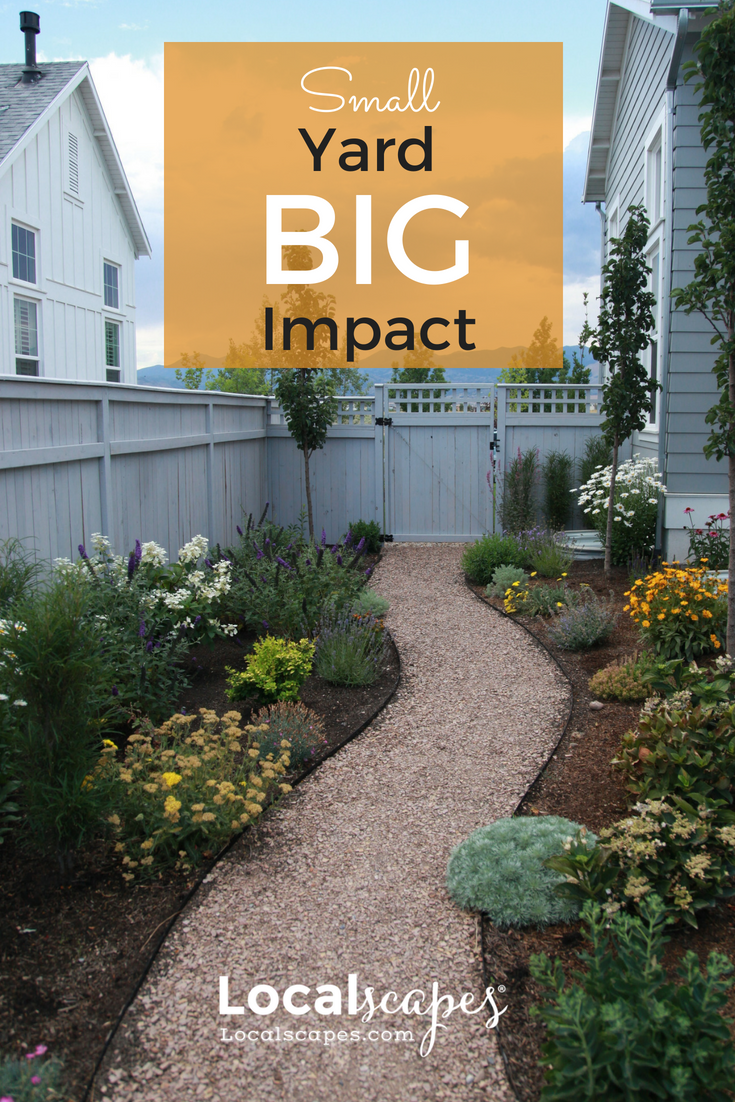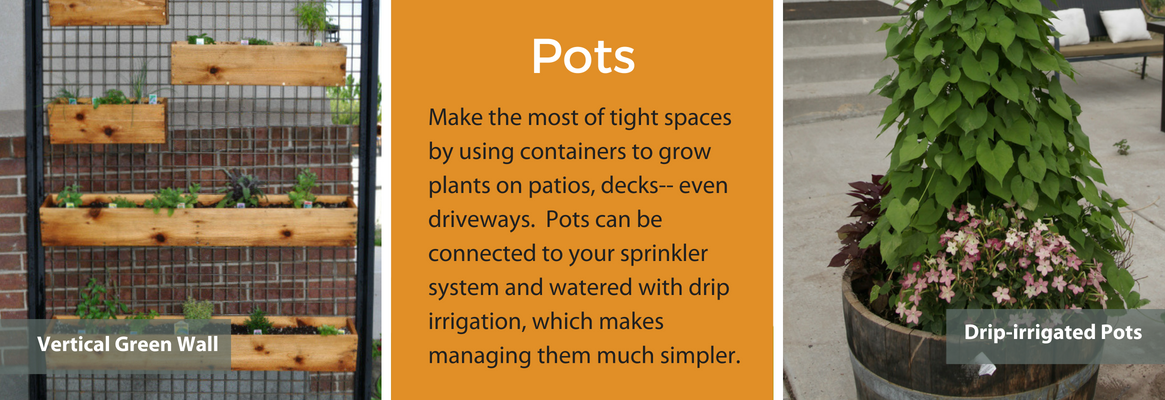
Small Yard Big Impact
-
As times change and the population of Utah continues to grow, many of us are buying homes with smaller landscapes. Many of these have side yards that are only big enough to be used as pass-through areas, and front and back yards where every square foot is valuable. But just because our landscapes are getting smaller doesn’t mean we have to diminish what we do with them. Here are some tips on how to get the most out of a small landscape:
Design First
Starting with a design always leads to a more successful outcome, but it’s especially important with a smaller landscape. One of the best ways to approach the design is to start with a central open shape. This element is what everything else should be designed around. In most landscapes the central open shape is lawn, but with smaller landscapes a larger patio or gathering area would work just as well—perhaps even better.
-

-
Dwarf Plants
One of the best space-saving concepts for any landscape is the use of dwarf versions of standard plants. Colorado Blue Spruce is one of the most popular trees in Utah, but it gets too big for most landscapes. We've all seen yards, especially in mature neighborhoods, where the spruces are overwhelming the landscape. However, in the past couple of decades, a number of new dwarf selections of spruce, that are much more manageable, have become available. Evergreens are an important part of a balanced landscape and it's now possible to have both a small yard and a backbone of evergreens within it. Below are two of my favorite blue spruces for smaller landscapes.
‘Blue Softie’- is a small spruce that makes an excellent evergreen accent. It is typically just 3’ tall in 10 years.
‘The Blues’- is a weeping spruce that typically only reaches 5’ to 6’ tall and wide. It can be used as a focal point to enhance a corner of a landscape.
-

-
Espalier
Just because you have a small landscape doesn’t mean you have to give up fruit trees. Espalier is the art of pruning and training a tree against a wall or fence. This allows you to grow plenty of fruit but doesn’t take up the space of a regular fruit tree. There are tutorials online on how to train a tree to do this, but if you aren’t confident in your abilities you can always buy a tree that has already been pruned to do this.
-

-
Pots
You don’t have to grow everything in the ground. In fact, trying to fit everything that you want into the ground in a small landscape can be impossible. If you place pots on your patios you can fill them with fruits, vegetables, and flowering annuals or perennials. To manage the frequent watering pots require you can use an automatic drip irrigation system attached to your garden hose.
If you are interested in learning more about landscape design and how to make the most of your space, Localscapes® is a great resource. Localscapes is all about having a Utah-friendly yard and the principles that are taught can be applied to any landscape size. You can also visit Conservation Garden Park in West Jordan to see many of the principles of Localscapes applied in a real landscape.
-


